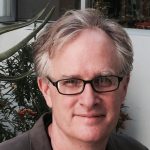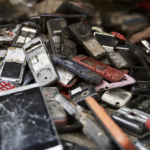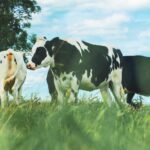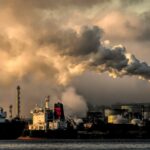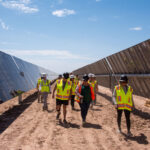A not-so-hot take on California fires, climate change, smoke waves—and the stories we need, to survive
By Jon Christensen | November 5, 2019
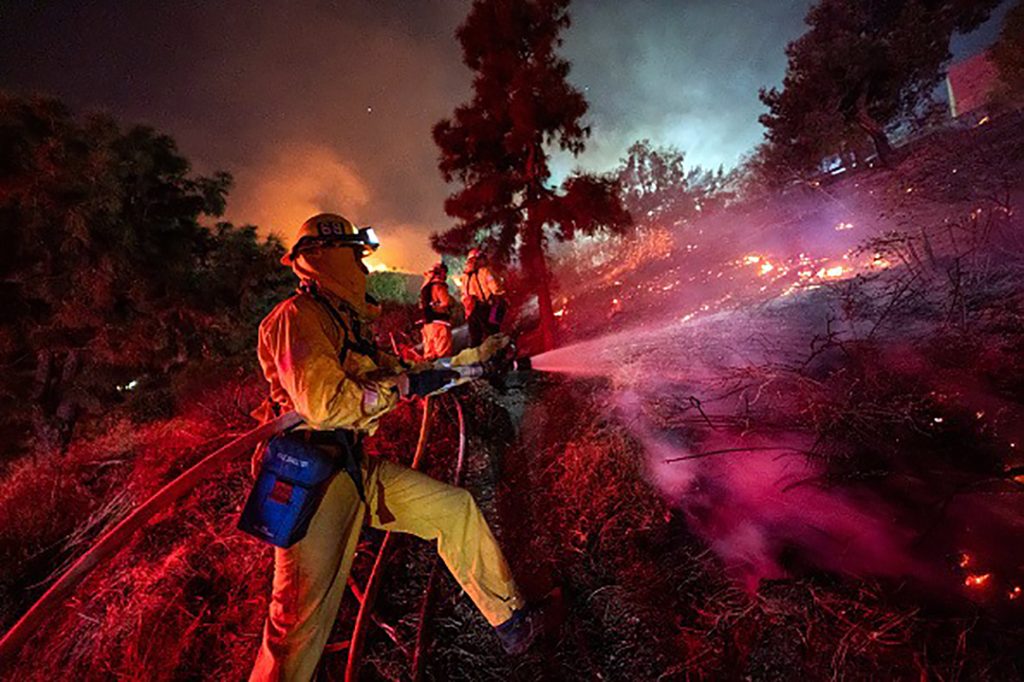
We are living in a world of media hot takes. They come at us fast and furious, like embers blown from a firestorm by a fierce Santa Ana or Diablo wind. In an instant we’re surrounded on all sides. Quick judgments are demanded. Winners and losers are soon declared.
This is exactly the opposite of the approach we need to confront the climate and other environmental challenges that we face these days.
I recently spent a day traveling from Los Angeles to Fresno for a scientific briefing on climate and wildfires. My partner’s phone had started pinging in the dead of night with alerts from UCLA, where we both teach and do research. A wildfire had exploded near the Getty Center in the Sepulveda Pass not far from the university. Our alarms went off at 6 a.m. We turned on the news and heard that the 405 freeway through the pass could get shut down. That was my easiest route north. I hustled to get on the road. I saw the red-hot outline of the fire from miles away in the dark. As I drove through the pass around 6:30 a.m., the western slope was ablaze, crackling with fire dripping steadily downhill through dry brush toward the freeway, at the same time as a fierce wind drove it across the ridge into the tony canyons of Bel Air and the Pacific Palisades to the south and west.
I stopped at a coffee shop in the San Fernando Valley to meet a colleague and carpool the rest of the way. A dry wind rattled the palm fronds overhead as I sipped a cappuccino and waited. The sky was clear but the air was filled with the dread that comes to L.A. every fall with the Santa Anas. When my colleague arrived, we headed north up Interstate 5, over the Grapevine Pass in the Tehachipi Mountains, and down into a thick coat of gray air blanketing the Central Valley from the southern Sierra Nevada to the Coastal Range.
It was fitting. The topic of the day was smoke waves. Climate Central, an organization of climate scientists and journalists, had organized the briefing along with Ethnic Media Services, a group that brings reporters from diverse media operating in different languages together with experts and decision makers.
As we drove north, the air thickened and visibility got worse. The southern portion of the Central Valley, the San Joaquin Valley, is home to four of the five cities with the worst small particulate pollution in the United States, and three of the five worst cities for ozone pollution. Fresno is one of them. Air quality in the valley has improved incrementally in recent years. But smoke from wildfires is now wiping out those improvements, as it gets pushed by prevailing winds into San Joaquin Valley, a long, oblong bowl surrounded by mountains on three sides. Those fires and smoke waves are getting worse and are expected to continue to grow with global warming.
A lively crowd of journalists from Spanish, Hmong, African American, and other media, as well as environmental justice advocates and community members crowded into a room in the Arte Américas center in Fresno, surrounded by a Day of the Dead exhibition, and listened attentively as Climate Central presented data on air pollution and smoke waves, and representatives from the Central Valley Air Quality Coalition and the Central California Environmental Justice Network added context. Then the local reporters and residents began sharing their experiences, observations, and questions.
Their air was bad before, during, and after the fires, they said, especially in the fall, when farmers burned their fields, and the almond harvest raised storms of dust. Then as cold weather comes, an inversion layer traps bad air in the valley. The rest of the year, pollution from the concentrated feedlots and dairy farms mixes with emissions from heavy diesel trucks, more and more of them coming and going to and from the warehouses of logistics operations sprouting around the poorest communities in the valley, hard by the highways that run north and south.
Several folks mentioned family members who were sick or had died from valley fever, a fungal disease that spreads with dust from the soil of the valley and seems to be getting worse, too, with climate change. They talked of kids with asthma and elders with heart and lung problems. They told of the struggle to get good information about air quality, especially in the languages spoken at home in their communities. They asked about breathing masks, and their cost, and how to keep the bad air out of their homes, when many families in older housing use swamp coolers on hot days, bringing outside air in. And what about the farmers and farmworkers who have to work outside every day to make a living?
Smoke waves, it was clear, are just one more burden on top of many others here.
And what could be done about smoke waves, anyway, they asked. Is there a solution? Something the reporters in attendance could tell their readers, listeners, and viewers?
We talked about the need for more prescribed burns, which cut the risk of massive wildfires and produce relatively less smoke than wildfire, and forest thinning projects, and what to do with the biomass they produce, which is not marketable timber. Burn it, too, for energy? We discussed a bond measure for wildfire prevention, clean water, and climate resilience that is likely to move through the California legislature early in the new year and be on a statewide ballot next November. Drafts of the $4 billion measure have included as much as $1.25 billion for forest management, wildfire prevention, emergency response, and restoration. That is three or four times the usual annual state spending on these efforts.
We discussed communities like theirs that have organized to ensure that a growing portion of those environment-related dollars—as much as 40 percent in recent bond measures—are prioritized to benefit disadvantaged communities throughout the state. This same pattern is spreading to state greenhouse gas reduction funds generated by California’s cap-and-trade program and subsequently appropriated to green ends. Some larger local jurisdictions, such as Los Angeles County, are following the state’s lead, prioritizing funding for disadvantaged, low-income communities, often communities of color, that have borne the brunt of pollution and now climate change.
What I’ve just described is the hopeful, long narrative of change in California. This type of change aims not just to prevent the next wildfire, or recover from it, but also to transform the state’s energy and water systems, transportation patterns, land use regulations, agricultural practices, and communities over time, and to do it equitably, accounting for and redressing historical injustices along the way.
Bending the curve of global warming to stabilize the atmosphere by mid-century and avoid the worst consequences of climate change is now a 30-year project—and California has already been at it for close to 40 years. Taking climate action—on an equitable basis—is what California is increasingly committing itself to do over the coming years and decades.
This slow success story is not an easy one to tell. Media hot takes from the midst of fire season—proclaiming the “end of California as we know it” and the like—are much easier to write. But the effort to deal responsibly and equitably with climate change is not a story that will play out in one season. It is the work of a lifetime or more. Understanding this longer narrative begins with listening to the complex life stories of people like those in Fresno, as well as sharing science and data with them.
As I traveled home in the evening, threading my way through the Santa Monica Mountains on back streets because the 405 was shut down, my windows rolled up against the acrid smell of burned hillsides, it seemed to me that this was not the apocalypse, but another critical episode in the ongoing story of California. A crisis to be sure, but one of many dimensions.
And it struck me that it may not be the mounting fires or even climate change that dooms us in the end, but instead, our fascination with the hot take, our desire for the simple answer, that keeps us from attending to this longer, more difficult narrative. And it is that longer narrative that can shine a light on the path forward, step by step, year by year, fire season after fire season.
Together, we make the world safer.
The Bulletin elevates expert voices above the noise. But as an independent nonprofit organization, our operations depend on the support of readers like you. Help us continue to deliver quality journalism that holds leaders accountable. Your support of our work at any level is important. In return, we promise our coverage will be understandable, influential, vigilant, solution-oriented, and fair-minded. Together we can make a difference.
Keywords: California wildfires, smoke waves
Topics: Climate Change
